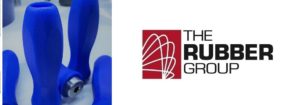Markets
ISO 10993 and USP Class VI both define testing requirements for biocompatibility. Learn about the differences between them so you can select the right rubber.
Read MoreThe Rubber Group sources and molds fully-tested and certified USP Class VI elastomers for medical, healthcare, pharmaceutical, and biopharma products.
Read MoreThe Rubber Group molds standard and custom silicone sterilization mats for medical, surgical, and dental customers in various colors, sizes, and features.
Read MoreMedical transfer molding provides tight control of part tolerances and can fill hundreds of mold cavities from a single pre-formed material. For both short runs and high volumes, this flexible manufacturing method supports complex shapes, thin-walled parts, and consistent dimensions.
Read MoreMedical transfer molding provides tight control of part tolerances and can fill hundreds of mold cavities from a single pre-formed material. For both short runs and high volumes, this flexible manufacturing method supports complex shapes, thin-walled parts, and consistent dimensions.
Read MoreMedical compression molding can produce cost-effective rubber gaskets and rubber products for medical devices and equipment. It’s a good choice for very hard or difficult-to-flow materials because this molding method doesn’t need to push the rubber through sprues, gates, or runners.
Read MoreMedical molding for rubber gaskets and rubber products offers medical device designers a choice of molding methods: injection, transfer, or compression molding.
Read MoreClosed cell neoprene sponge rubber for passenger rail cars meets smoke and flame requirements. Use for seals, gaskets, thermal insulation and vibration isolation.
Read MoreMedical rubber molding and process validation for critical parts includes protocol development, SPC and process capability, IQ/OQ/PP, and proof of regulatory compliance.
Read More- « Previous
- 1
- 2
- 3
- Next »









